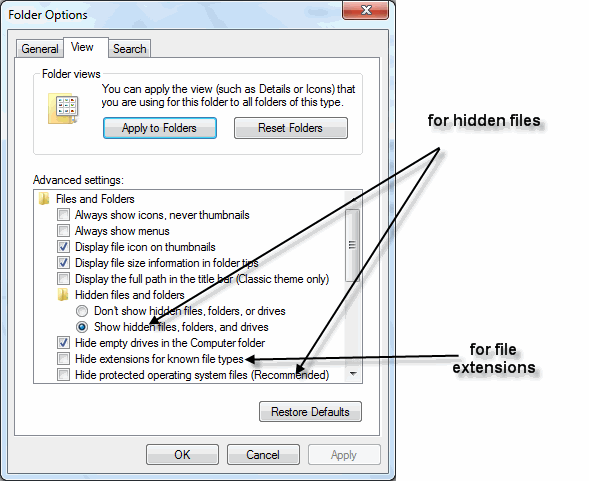
-Step-7.jpg)

#HOW TO VIEW FILE TYPES HOW TO#
On this screen, the registered file types are displayed.įor more information about how to change the file types, files, and folders that are migrated when you specify the MigUser.xml file, see User State Migration Tool (USMT) How-to topics. Hit File name extensions to see or hide the file extensions. And you can see the file type indication at leftmost part of ls -l command. Special files (This category is having 5 sub types in it.) So in practical we have total 7 types (1+1+5) of files in Linux/Unix. Open Control Panel, click Control Panel Home, and click Programs.Ĭlick Default Programs, and click Associate a file type or protocol with a program. By default Unix have only 3 types of files. To find the registered file types on a computer running Windows 7 or Windows 8Ĭlick Start. A good starting point for finding files types to include is to look at the registered file types on the computer. To display the type of information the file named myfile contains, type the following: file myfile To display the type of each file named in the filenames.lst. Files may be saved to a single folder or scattered across a drive. Once you have verified which files and file types that the end users work with regularly, you will need to locate them. This can be accomplished with location modify rules.

Identify any data that needs to be redirected to a new location in the apply phase. For example, you might have shared data on source machine or you might wish to clean up documents outside the user profiles on the source system. Decide where files should be migrated to on the destination computer for example, \My Documents, a designated folder, or a folder matching the files' name and location on the source computer. Consider the locations on the computer that should be excluded from the migration (for example, %WINDIR% and Program Files). However, it also uses other file types, such as templates (.dot files), on a less frequent basis.Įxcluded locations. For example, Microsoft Office Word primarily uses. Applications normally use specific file name extensions. You can create this list based on common applications used in your organization. Consider which file types need to be included and excluded from the migration. For non-standard locations, consider the following:įile types. Next, you should determine and locate the non-standard locations. , C:\Data, and company-specified locations, such as \EngineeringDrafts. First, you should determine the standard file locations on each computer, such as My Documents. When planning for your migration, if not using MigDocs.xml, you should identify the file types, files, folders, and settings that you want to migrate.


 0 kommentar(er)
0 kommentar(er)
